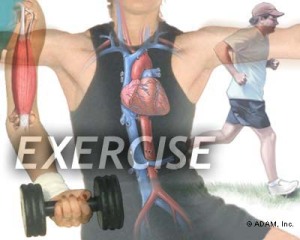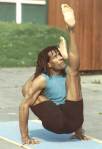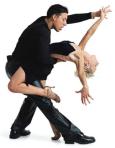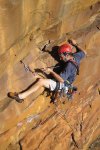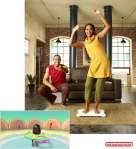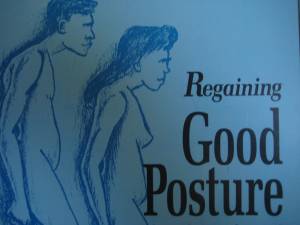
Posture. Just mention the word and we tend to sit up straighter. We think of our mothers harping on us as children, ‘sit up, don’t slouch!’ Yet do we really understand the consequences of both good posture and poor posture? Can we imagine how the world would treat us if our posture were different? No matter what your posture looks like, you are subconsciously being assessed. Not to mention the role posture plays on the health of your joints, muscles, energy and more.
Let us look at this in greater depth. The body is designed to work at an optimal level within gravity. Joints, bones and ligaments are stacked in such a way to use the least amount of energy to hold us upright, to be able to stand or sit effortlessly.
Have you ever watched a young child sit? Do you notice they don’t typically lean back in the chair but rather naturally sit quite straight with no effort? What happens as we go through life that we start to rely on that chair back to hold us up? Or that we stand in such a way as to put more pressure on our entire being? These are some of the questions that started to arise as I became professionally involved in health.
I have been a Certified Massage Therapist for 19 years and involved in health education in various ways for 30 plus years. I came from an allopathic family. Although I respect this school of thought, I found myself looking for an alternative way to address health. With an analytical mind, I approached massage from a therapeutic place. I started teaching treatment oriented massage shortly after graduating. My practice brought many clients with various pain complaints. I started really looking at the whole person in regards to their pain and often found that there were physical issues that often played into all or a portion of their complaints. This brought me deeper into functional and structural assessment. I was amazed at what I found.
To begin, posture plays a large role in how we approach life. If we are hunched over or in pain from poor posture, it shows. We give off signs of lack of self confidence, lack of intelligence, being overly tired, shyness, and more. In addition, if our posture isn’t optimal, the amount of energy it takes to go through daily life increases exponentially. No longer can we rely on the structural body to hold us up but rather our muscles now must be recruited to fight gravity, causing us to expend a great deal of energy. Our entire being is compromised and energy that should be used to enjoy life is used just to hold us up, literally.
So what really happens? To start, we have become a sedentary society. No longer do most of us make our living by working in the fields, walking long distances, carrying packages, and so forth. Instead we spend long periods of time sitting at a desk followed all too often by sitting in front of the computer or television when we get home. Our bodies have become lazy. Some muscles hardly have to work much at all in these situations. Not only do they not have to engage but, allow them to be in a shortened position for a long enough period of time and they will stay shorten indefinitely. Other muscles, at the same time, will be in an elongated position with some working overtime and others just becoming weaker. All this results in our muscles being imbalanced and our joints compromised. Along with these changes, we can experience pain, burning, numbness, weakness, tingling and more. Depending on the situation, nerves can be compressed and lead to syndromes such as Thoracic Outlet Syndrome and Carpal Tunnel. Low back pain, which is all too common, is often a result of poor posture and muscular imbalance. Consequently the typical answer to these complaints, often result in surgery or pain medications. Although this might be necessary under certain circumstances, they should never be the first choice of treatment.
Let’s start with looking at the head and neck. Under normal circumstances, the head should sit right on top of the shoulders, with the correct position being the ear vertically in alignment with the shoulder joint. Unfortunately all too often the head starts to jut forward. Some of the common reasons for this are from slouching, trying to read something that is too small (so you lean forward to read it), lack of lumbar support while sitting or from improper positioning of a computer screen. Our head typically weighs between 12 – 15 pounds; a lot of weight when you think about it and yet if sitting as it should, effortless for the muscles. Take it out of that ideal position however and multiple problems can arise. Dr. Rene Cailliet says that for every inch the head is forward of its’ ideal position adds 30 pounds of pressure onto the posterior neck muscles! In addition, this position can result in:
- Added pressure to the facet joints of the vertebrae which have a great deal of pain receptors, thus causing pain perception to increase
- Constriction of blood flow to the muscles, resulting in unhealthy muscles that become prone to injury
- Tight muscles that tend to refer pain to the head, resulting in headaches
- The health of the temporomandibular joint causing TMJ dysfunction
- Carpal tunnel symptoms
Learn stretches to keep your neck healthy!
Let us move on to the shoulders. Typically the upper back has a slight convex curve. When in this position, the vertebrae are stacked properly and the ligaments on either side of the vertebrae maintain this position. As we start to slouch forward, the shoulders tend to round inward. The muscles in the upper back are in an overstretched position and are now having to work hard to keep you from falling over forward. The muscles in the front of the chest are becoming shorter with the potential to compress the nerves that innervate the arms. One of the most common results is known as Thoracic Outlet Syndrome. In addition, the following complaints can arise:
- Burning between the shoulder blades
- Chest pain
- Shoulder pain
- Carpal Tunnel syndrome
- Arm pain
- Inability to take a full deep breath
Learn how to stretch and strengthen the shoulder muscles!
Next is one of the most common areas of complaint – the lower back. A great deal of work has been missed in our country from low back pain and much of it can be avoided. To begin, we will look at the role sitting plays. When sitting for a long period of time, the muscles in the front of the hips, known as the hip flexors, are in a very short position. They are used a great deal during walking so they do not tend to get weak, as the upper back muscles, but they do become very short. This results in changing the normal position of the pelvis and creating what is known as an anterior pelvic tilt. A small degree of anterior pelvic positioning is normal for women whereas men’s pelvis should stay neutral. The issues arise when this position is exaggerated. The pressure tends to be moved posterior to the discs, putting a great deal of pressure on the facet joints. Remember as mentioned earlier, facet joints are loaded with pain receptors.
In addition to sitting, the pelvis can end up in an anterior position due to being overweight, especially when we carry our fat in our bellies. Belly fat puts a great deal of added weight in front of the body. The only way to compensate for this added weight is to shift the positioning of the pelvis into that exaggerated anterior pelvic position, once again causing an increase in low back pain.
Along with general pain complaints from the low back, the following issues can arise:
- Hip pain
- Sciatica
- Neurological complaints in the legs
Learn to keep your back healthy and strong!
So what do we do about all this? It would be great if we could move away from sitting for extended periods of time but this is unlikely. Rather we need to work within the parameters of our society. The following is a list of ideas that can have a positive impact on our posture thus decreasing or eliminating the negative results of poor posture:
- Movement or regular exercise: By getting the blood to flow throughout the entire body, the muscles are receiving fresh nutrients and eliminating waste products. These waste products in and of themselves can cause pain. Also by moving, we are taking the muscles through a greater range of motion which can be a start to add length and strength to the muscles.
- Stretching: Working to lengthen the shortened muscles before strengthening the elongated weaker muscles will aid in realignment of the skeletal system. It is important that specific stretches are given in order to lengthen the appropriate muscles.
- Strengthening: Once the shortened muscles are working towards being longer, it is then time to add in exercises to strengthen those muscles on the elongated side of the joint. This is important to allow the body to regain a healthy posture where the joints and ligaments are able to do their job thus decreasing the amount of energy it takes to remain upright in gravity.
- Ergonomics: Assessing the position of the person to the height of the desk, the relationship to the chair, the positioning of the computer and so forth is a key. Only focusing on ergonomics will not change the posture by itself but rather help to maintain the healthier posture with the aforementioned suggestions.
- Diet: Although not directly involved in posture, it does play a large role in the health of the muscles. Eliminating fast food, sugar, refined foods, soda, excess caffeine and more will enable the muscles to receive the nutrients need for maintaining health. A healthy diet will also decrease constriction of blood flow thus allowing the entire body to process waste products at a healthier rate.
These are just some suggestions to creating a healthier posture. Remember posture is much more than just looking good. By having a body that is fully supported by the appropriate joints and ligaments, we will have more time and energy to enjoy all aspects of life and to live it to its’ fullest. Isn’t it time to take a good look at your body?
I am excited to tell you that my eBook, Regaining Good Posture IS NOW AVAILABLE!
Learn about:
- Which muscles are potentially short or weak
- How to assess your own body
- Which stretches you need to do and how to do them
- Strengthening Exercises to maintain a healthy posture
Included is a video presentation of each stretch and strengthening exercise.
GO HERE to check it out!
After reading my article on posture, Dr Phil said this:
“Couldn’t agree more – great article examining in detail the importance of good posture. The advice is all spot on.”
He has a great software product called PostureMinder that you might like to check out!
Testimonial from D.M. Shepard, Torrance, California –
“As I mentioned, I was a personal trainer years ago and I still refer to my anatomy books to diagnose surprise aches and pains. Suddenly a couple of weeks ago I developed major discomfort in my left groin and lower back so I limped around my business office for a full week before I searched online for treatment for the iliopsoas muscle. Your video demonstration reminded me that sitting at a desk all day will reduce flexibility, shorten muscles and over time compromise posture. The best part of your video was the stretch you demonstrated to lengthen the iliopsoas muscle area. My discomfort was remarkably improved after only one day of stretching and I just about have regained full range of motion.
The trend these days is for people to live longer lives. As a professional financial advisor, I have to prepare more ‘preventive’ investment strategies for my clients to stay ahead of potential financial problems later in life.
I see the same ‘preventive’ value for regaining and maintaining healthy posture and stretching flexibility, to assure functionality and better quality of life. Certainly posture and stretches are cheaper than pills and surgery!
Thank you, Julie!”


